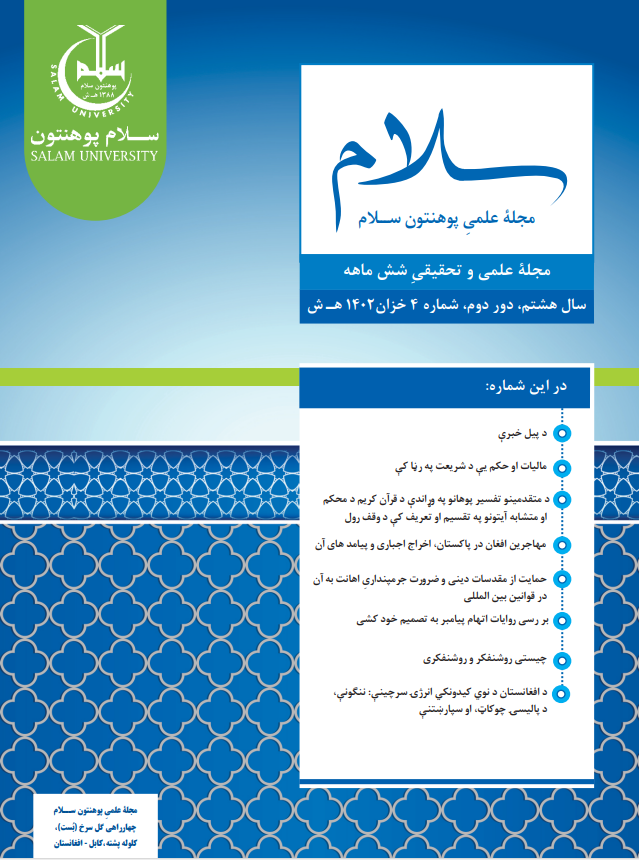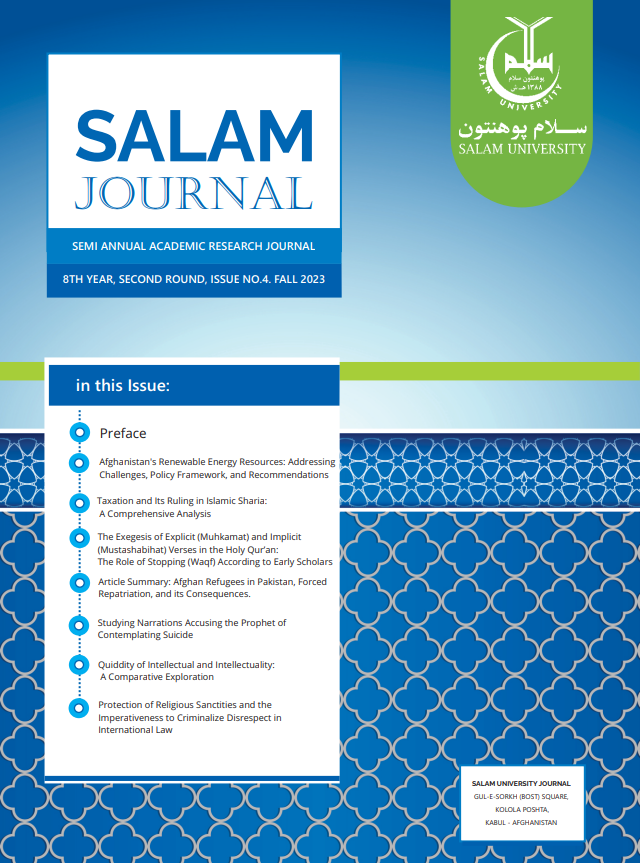Afghanistan’s Renewable Energy Landscape: Addressing Challenges, Policy Framework, and Recommendations
چکیده:
Afghanistan, a developing nation, aims to generate 10 percent of its electricity from renewable sources by 2032 to overcome challenges like imported electricity dependency, rural electrification gaps, and environmental degradation. This paper offers a comprehensive review of Afghanistan's renewable...

اطلاعات مقاله
Issue 2 (F-2023)
Afghanistan’s Renewable Energy Landscape: Addressing Challenges, Policy Framework, and Recommendations
Afghanistan, a developing nation, aims to generate 10 percent of its electricity from renewable sources by 2032 to overcome challenges like imported electricity dependency, rural electrification gaps, and environmental degradation. This paper offers a comprehensive review of Afghanistan's renewable energy landscape, including potential, current capacity, and future plans through utilizing secondary data collection methods. Despite abundant renewable energy potential in hydropower, solar, wind, and biomass, challenges like unclear policies, limited expertise, security risks, and public engagement barriers persist. To address these hurdles, a clear national renewable energy policy, enhanced institutional capacity, and public-private partnerships are crucial. Overcoming these challenges can help Afghanistan achieve its renewable energy goals, while also fostering peacebuilding, state-building, and climate change mitigation. Key words: Afghanistan, capacity building, renewable energy, energy access, electricity, energy policy
📥 دسترسی به مقاله
همه مقالات - شماره فعلی
نمایهسازی مجله
نمایه شده در پلتفرمهای آکادمیک اصلی




